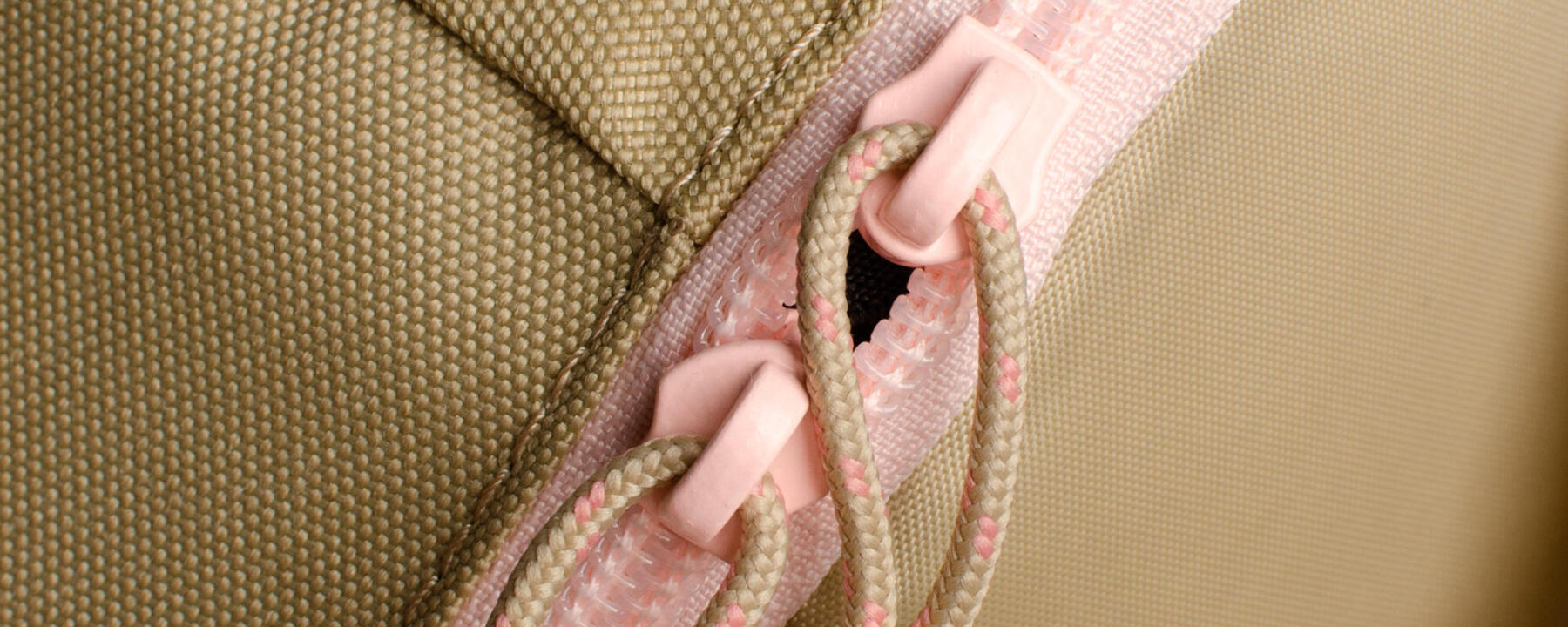How to clean your backpack:
Light clean or deep clean?

Extend your backpack with these 3 tried-and-true ways.
A good backpack for hiking makes or breaks a hiking experience – which is why many hikers and trekkers are willing to invest in high quality ones.
However, they are usually neglected and not properly taken care of.
In order to extend its lifespan, follow these 3 simple steps!

Light clean or deep clean?
Firstly, unload all the contents of your backpack.
Then, undo all zips, flip the backpack inside out and remove all detachable parts (eg. adjustable shoulder straps).
Hang it upside down and store it in a dry place away from direct sunlight. This allows natural drying of moisture (eg. sweat, muddy water) to take place.
After the drying process, use a soft brush to remove all dirt and debris.
PRO-TIP: Avoid overcleaning or using mechanised cleaning methods (such as machine wash, tumble dry, dry clean, iron, bleach) as this might result in a breakdown of backpack material, which can affect properties like waterproof coating.
Vacuum your backpack to remove dirt. Using very gentle soap, proceed with washing it by hand.
Feel free to use additional tools, like a small brush to clean hard-to-reach areas.
Spend more time on certain areas – namely straps and back padding, which are in direct contact with the body.
Complete the washing process by rinsing with lukewarm water.
PRO-TIP: To keep your backpack smelling fresh, insert tea bags inside all the compartments of your backpack overnight.

Tips and tricks for easy storage!
![backpaking aw17[8383138]_tci_scene_165](https://contents.mediadecathlon.com/p2020524/k$4541be4d083a162f282e4128e3c7e925/1800x0/200pt134/400xcr240/backpaking%2520aw17%255B8383138%255D_tci_scene_165.jpeg?format=auto)
While resting during a hike, many often place their backpack with its front facing upwards.
This should be avoided, as stones and debris can cause chafing on the back padding while dirt might enter its porous surface which might be difficult to remove.
Coupled with the fact that these parts are in constant contact and friction with the body, we should be mindful of preventing any damage by keeping the back padding facing upwards.
PRO-TIP: Wear abrasion-resistant tops to ensure that shoulder straps will not cause any discomfort during hikes.

If they are stuck, refrain from yanking - instead, align the zipper tracks parallel to each other and work your way up (or down) slowly and gently.
PRO-TIP: Rub the tip of a pencil along both sides of the zipper until you see the graphite (dry lubricant) particles left behind.
Try sliding the zip in both directions to see if it works. Repeat if required.
Alternatively, use an oil-based lubricant instead to smooth out rough edges and repeat the same steps.

A good practice is to always close all buckles and tuck excessive straps through the backpack’s inbuilt loop.
It prevents these plastic fasteners from swaying excessively, preventing trapping or breakage.
PRO-TIP: Switch out your old buckles with replaceable ones and your backpack will be as good as new!
Similar to the previous point, the ideal way to keep a backpack is with its front side lying on the floor or leaning against the wall or tent.
Steer clear from storing your backpack at the bottom of your wardrobe or under a pile of clothes, as putting extra weight on it might disfigure the backpack and in turn, reduce its lifespan.
Do this to prevent mould and foul smells from developing, as these are prevalent in humid environments. It is also a good idea to air your backpack indoors from time to time.
PRO-TIP: Avoid putting your backpack under direct sunlight as this might damage the material of the backpack.

Keep 'em dry!
After a few years of use and wash, restore the fabric's water repellent properties by using a "waterproofing" spray.
Prepare your backpack for hiking by cleaning it well before applying a layer of waterproofing or water-repellency treatment.
Avoid spraying too much as it might potentially cause discoloration – just a layer or two will suffice.
PRO-TIP: Bear in mind that no amount of spray can help in making your backpack 100% waterproof. Water is still able to seep in through the seams and zips.
Therefore, retire your backpack when needed (i.e. like when there is too much wear and tear on the zips due to friction!).
Show a little extra care for your backpack by following this simple yet effortless guide.
You will be surprised by how small actions can result in huge differences!

Hike more, worry less!